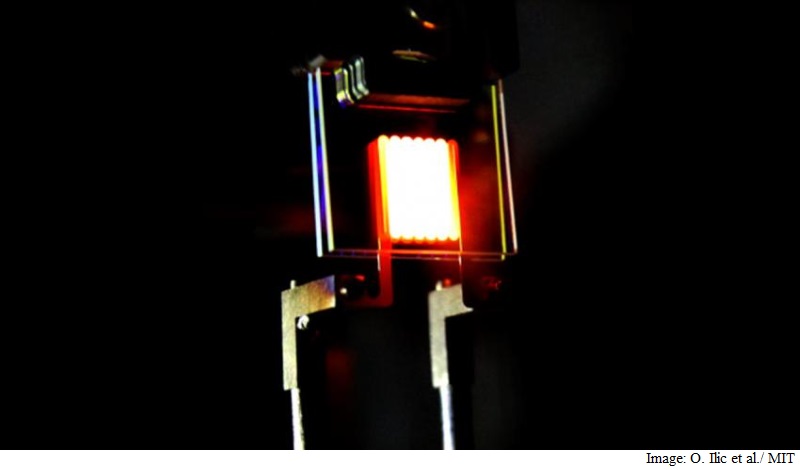- Home
- Science
- Science News
- New Incandescent Lightbulb Prototype Can Recycle Heat
New Incandescent Lightbulb Prototype Can Recycle Heat

Incandescent lightbulbs produce light by using electricity to heat a thin, tungsten wire filament to temperatures of around 2,700 degrees Celsius.
This causes the filament to glow and produce a broad spectrum, warm white light.
However, lightbulbs of this type are hugely inefficient - they only convert around 2-3 per cent of the energy they use into light - the rest is wasted as heat.
Researchers at Massachusetts Institute of Technology (MIT) in US used nanotechnology to build a structure that surrounds the filament of the bulb and captures the leaking infrared radiation, reflecting it back to the filament where it is re-absorbed and then re-emitted as visible light.
The structure is made from thin layers of a type of light-controlling crystal.
The layers are stacked in a way that allows the visible wavelengths to pass through, while infrared get reflected back to the filament as if in a mirror, researchers said.
"It is not so much the material you make the surrounding structure from, it is how you arrange the material to create the optical filtering property that will recycle infra red light and let the visible light through," lead author Ognjen Illic told 'BBC News'.
The crystal structures could boost the efficiency of incandescent bulbs to 40 per cent, making them three times more efficient than the best LED or CFL bulbs on the market.
The researchers have built their first proof-of-concept units which reach an efficiency of 6.6 per cent, which is almost three times the level of a standard incandescent bulb.
The research was published in the journal Nature Nanotechnology.
Catch the latest from the Consumer Electronics Show on Gadgets 360, at our CES 2026 hub.
- Samsung Galaxy Unpacked 2025
- ChatGPT
- Redmi Note 14 Pro+
- iPhone 16
- Apple Vision Pro
- Oneplus 12
- OnePlus Nord CE 3 Lite 5G
- iPhone 13
- Xiaomi 14 Pro
- Oppo Find N3
- Tecno Spark Go (2023)
- Realme V30
- Best Phones Under 25000
- Samsung Galaxy S24 Series
- Cryptocurrency
- iQoo 12
- Samsung Galaxy S24 Ultra
- Giottus
- Samsung Galaxy Z Flip 5
- Apple 'Scary Fast'
- Housefull 5
- GoPro Hero 12 Black Review
- Invincible Season 2
- JioGlass
- HD Ready TV
- Laptop Under 50000
- Smartwatch Under 10000
- Latest Mobile Phones
- Compare Phones
- OPPO Reno 15 Pro Max
- Honor Win RT
- Honor Win
- Xiaomi 17 Ultra Leica Edition
- Xiaomi 17 Ultra
- Huawei Nova 15
- Huawei Nova 15 Pro
- Huawei Nova 15 Ultra
- Asus ProArt P16
- MacBook Pro 14-inch (M5, 2025)
- OPPO Pad Air 5
- Huawei MatePad 11.5 (2026)
- Xiaomi Watch 5
- Huawei Watch 10th Anniversary Edition
- Acerpure Nitro Z Series 100-inch QLED TV
- Samsung 43 Inch LED Ultra HD (4K) Smart TV (UA43UE81AFULXL)
- Asus ROG Ally
- Nintendo Switch Lite
- Haier 1.6 Ton 5 Star Inverter Split AC (HSU19G-MZAID5BN-INV)
- Haier 1.6 Ton 5 Star Inverter Split AC (HSU19G-MZAIM5BN-INV)












